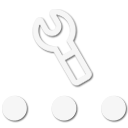I've been off-roading all my life. That doesn't mean I know more than anyone else, but I've built or helped build more rigs than I can count. I know you only asked for three suggestions, but I am gonna do 5 so you can see how and why I prioritize what over the other...
I will also comment in blue to tell you where my latest build (2016 F150 FX4) sits at the moment Here is my
opinion:
1. TIRES!!! generally speaking the biggest you can fit, and don't go cheap! As stated above - what and where will determine the best tread pattern. Know here that more sidewall equals more tire equals tougher and just better. So stay with a smaller rim if you are changing them out. I know 20's look cool...but I'll never have them on an offroad rig!
1. The main accessory for tires is a repair/patch kit and compressor as well as a jack appropriate for your vehicle (in my case a high-lift is considered a must-have) You aren't going anywhere on a flat tire unless you're willing to kill the rim.
2. I am going to include a lift here because if you plan on a lift I say do it first so you're not going back changing other things you hadn't considered prior to the lift (one example would be shocks, another might be gears, driveshafts, it actually can be a very long list, so just do the lift as soon as you can afford if that's something you want)
In my case I bought a truck with a decent 6 inch lift installed as I didn't feel like doing that part. I went from the 33" tires to 35X12.5 on 17" rims. The BS shocks that came with it will soon be upgraded, but this isn't really a real critical to function part unless you're dessert running.
2. Recovery - This is something that will almost always be evolving, but has to start somewhere! This is number 2 because number 1 can fail!
1. Recovery Strap, u-bolts AKA Shackles, and make sure (as stated above) you have a minimum of one recovery point on your vehicle. this is also a tool that others can use, so you might be of help even when you're not needing help!
2. Traction boards - you kinda get what you pay for again here, but since I have the hi-lift I go for boards with the jack footing in them. This is number two because while the photos always show these things alone getting you unstuck (and sometimes they can) more often than not a small tug is all you need.
3. Winch and winch accessories.
My current build is at step 2, but I don't do real serious trails as much anymore so I haven't fully decided if I NEED the winch. My build includes a full tool roll as well, and some backup items like misc fuses, Zipties, etc.
3. Protection - protecting the underside of a rig is critical! Depending on your trim package some or all of this may already be done. This is #3 because getting unstuck is VERY often the cause of damage that will end the weekend. So, once you have lift, tire, and recovery points this becomes obvious.
1. Skid plates - especially fuel tank and oil pan
2. Transmission plate if available
3. Protect looks with rocker bar (yes, this one also increases capability over rocks)
Luckily the FX4 package comes with pretty decent undercarriage protection. Again, I don't do many hard trails so if I efe up the stock "rock bars" then the wife won't care if I upgrade them as well.
4. Additional power - in the old days this was a dual battery set-up (or more) - Today I prefer a solar set-up IF AND ONLY IF you have an AC converter in the car.
My converter charges a second battery while the vehicle is running, and solar charges it while the vehicle is not running. This setup can keep a compressed fridge running virtually indefinitely while still running plenty of LED camp lights, air compressor, etc. Do some planning and math before committing to one or the other
5. Gears and lockers - and if you have gotten to this point and don't know what these do or why you would change them you probably need to stop and do A LOT of research. DO NOT make these choices based on a whim or single recommendation! These components are critical to acceleration, top speed, torque, etc... you should be well versed in this unless you just have a lot of cash to burn before spending the dough on these components.
Again, FX4 package - locked rear should be plenty for the trails and conditions I wheel. The gears however were upgraded in both diffs shortly after I bought it. This was the only thing I needed to do because of the vehicle trim package, and luckily here as well ford makes a larger gear for those diffs.
You may have noticed I left out lights, and I don't think anyone has recommended them thus far in the thread - I am assuming in my post you have at least stock fog lights. If not, I would suggest some additional lighting after additional power IF you're going to be doing a fair amount of offroad driving at night.
Really hope all the detail helps with what you're looking for! Happy trailin!












